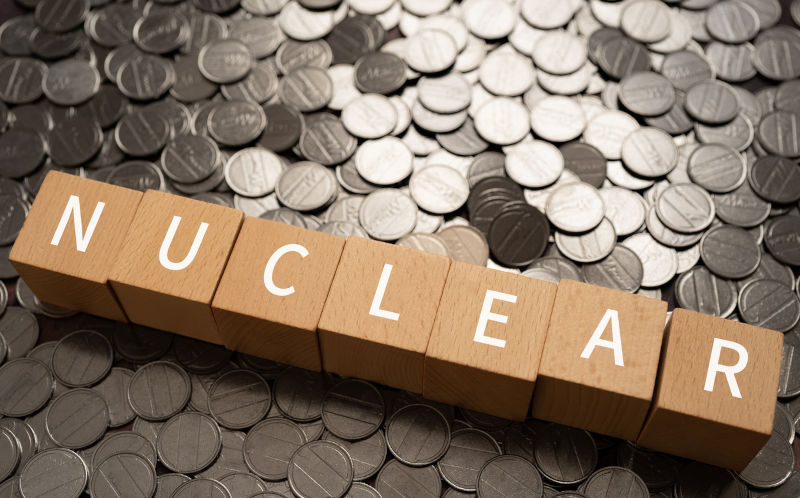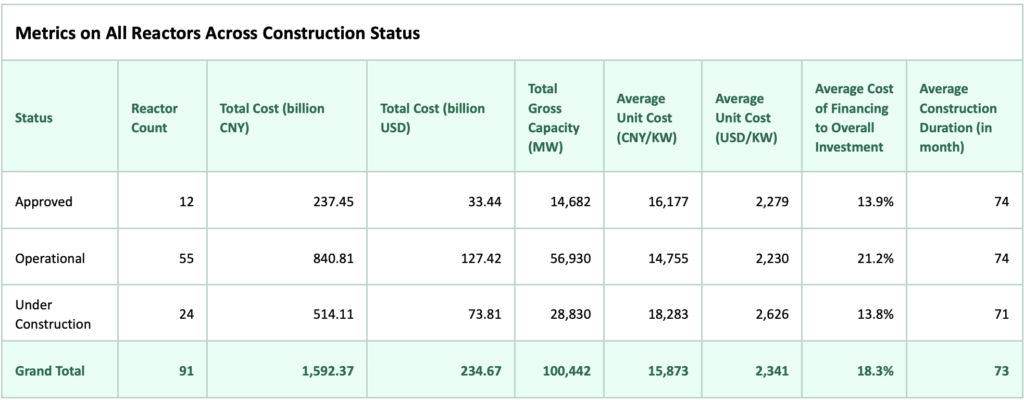Meeting the challenges of climate change requires an array of options in each country’s energy mix. Nuclear is one of the many options. But how realistic is it for Australia? Nuclear cannot compete with offshore wind in UK, neither can it compete with cheap shale gas in the US.
‘What we’ve looked at is the experience of every developed country around the world,’ Peter Dutton said in December 2024, in releasing a consultant’s report on the cost of proposed nuclear power plants (NPPs) in Australia. ‘Now we deliver a plan which will get the energy mix right, it will lower costs, it will keep the lights on, and it will set our country up for generations to come.’
What has been the actual experience in NPP development in OECD countries? How did the Coalition draw the confidence from these experiences? In the 21st century, only 10 NPPs have been built or are under construction in 5 of 38 OECD countries: Finland, France, South Korea, UK, and the US – all have had active nuclear power plants in operation since at least 1970s. The cost of constructing each unit of NPP runs from US$7billion in South Korea, US$18 billion in the US, to US$21/30 billion in UK, two to three times of the original estimates. On average, the construction of NPPs in OECD countries is over 10 years, as shown in the table, again doubling the scheduled duration or even longer.
Table I: OECD Nuclear New Builds
| Type | Country | Unit | Construction start year | Connection to grid (year) | Initial announced cost (billion) | Ex-post construction cost (billion) |
| AP1000 | US | Vogtle 3
Vogtle 4 |
2013
2013 |
2023
2024 |
US$14 | US$36 |
| APR1400 | S Korea | Saeul 1,2
Shib-Habul 1,2 |
2008/2008
2012 |
2016/2019
2022.2023 |
US$12 |
US$14/16 |
| EPR | Finland | Olkiluoto 3 | 2005 | 2023 | €3 | €12 |
| EPR | France | Flamanville 3 | 2007 | 2025 | €3.3 | €13.8 |
| EPR | UK | Hinkley Point C 1,2 | 2016 | Est 2031 | £31-35 | Est £42-48 |
Sources: IAEA, Power Reactor Information System World Nuclear Association, Reactor Database.
In addition,
- all these NPPs were being built at sites that already hosted NPPs, that significantly reduced the cost of site development (normally 20% of the construction cost) and saved time and effort on site regulatory approval.
- with NPPs in operations, all the countries already had a workforce that often takes a decade to train, equipment supplies, and a regulatory framework in place.
- building multiple units on a single site is 30% cheaper than single unit as suggested by the Coalition; and
- all had a significant financial support from the government (e.g. government loan guarantees, tax credits, cost sharing, or sovereign borrowing). Even with government guaranteed loan of $12 billion from the US Department of Energy (DOE), the Vogtle project bankrupted Westinghouse in 2017 before it was completed.
The APR1000 of Westinghouse, APR1400 from South Korea, and EPR from France are the only three reactor models from OECD countries that have been built: APR1000 and EPR reactors are also in operation in China, and four units of the Korean APR1000 have been built in UAE. UAE is the exception to this dismal record. It never had any nuclear power plants before 2009 when the Korean consortium won the bid to build 4 units of Korea APR1400. The initial bidding cost was e $20 billion for 4 units. Once the construction began, the estimated cost was $30 billion – Abu Dahbi provided $10 billion in equity, $10 billion in debts, and $10 billion in a combination of commercial and sovereign borrowing. Abu Dhabi Investment Authority – a sovereign wealth fund, like the Future Fund) is allowed to lend to domestic borrowers; the asset under its management exceeds $1,090 billion, vis-à-vis $150 billion of the Future Fund – a deep pocket Australia does not have. The final cost was US$32 billion, and the projects were completed within 10 years.
The Coalition often uses Canada as a reference point. Canada has had its own reactor design – CANDU reactor since the 1950s. Most of its NPPs were built in the 1970s and 1980s and the last nuclear power plant connected to grid was in 1993 – 32 years ago – despite its advantages in terms of an established reactor technology, a skilled labour force, and its own uranium fabrication capacity, none of which exist in Australia.
Russia exported more of its reactors than all other countries, to Bangladesh, China, Egypt, India, Turkey, and other Eastern European countries. China has built more NPPs since 2000 than any other countries. The average construction of a large advanced nuclear power plant in China is under 7 years, and the average capital cost for each unit was US$2.6-3.5 billion. It has had its own brand of reactor designs, and built an entire supply chain that can support 7-8 new buildups each year.
Table 2: China’s Nuclear Status
Source: Green Prizm, ‘Summary of 2023 Report on Chinese Nuclear Power Generation and Cost Analysis’ April 2024, at https://anthropoceneinstitute.com/wp-content/uploads/2024/07/2023-Summary-of-Report-on-Chinese-Nuclear-Power-Generation-and-Costs-Analysis-20240424Final.pdf.
I doubt copying China or buying their reactors or experience is what the Coalition in mind.
In a recent report, even the US DOE turned away from large NPP projects because of the problems of
- Inadequate large project integration capacities
- Shortage of experienced labour
- Failure of supply chains
- Lack of companies with nuclear certification
- Lack of coordination between construction companies and the owner
- Ongoing design issues of safety concerns
Instead, DOE is promoting small modular reactor (SMR) development. Although NuScale is the first SMR that received regulatory approval in the US, no utilities were prepared to sign contracts to build it for one simple reason – the cost for a first-of-a-kind (FOAK) NPP is normally 40% higher than later series, and costs for SMRs are much higher than large ones. In theory, SMRs need to compensate a lack of economies of scale with economies of series (building several at a time) – but that is unlikely to happen for a FOAK project. The only SMR using advanced light water reactor technology under construction is ACP100 in Hainan, China. All other SMRs are at different design stages and will not be ready for deployment until the end of the decade or the 2030s. SMRs with non-light water reactor technologies can be used for multiple applications, in addition to electricity generation, but they are all still at design stages, except one high temperature gas reactor in operation again, in China. It is unlikely, the Coalition would ever dare suggest we adopt Chinese or Russian nuclear reactors for Australia, while as DOE explains, ‘Waiting until the mid-2030s to deploy new nuclear at scale could lead to missing decarbonisation targets.’
Based on the international experiences, is the Coalition still confident that its nuclear plan could give Australia cheaper, cleaner, and reliable electricity by 2035-2040?
Xu Yi-chong
Xu Yi-chong is a professor in the School of Government and International Relations at Griffith University.

